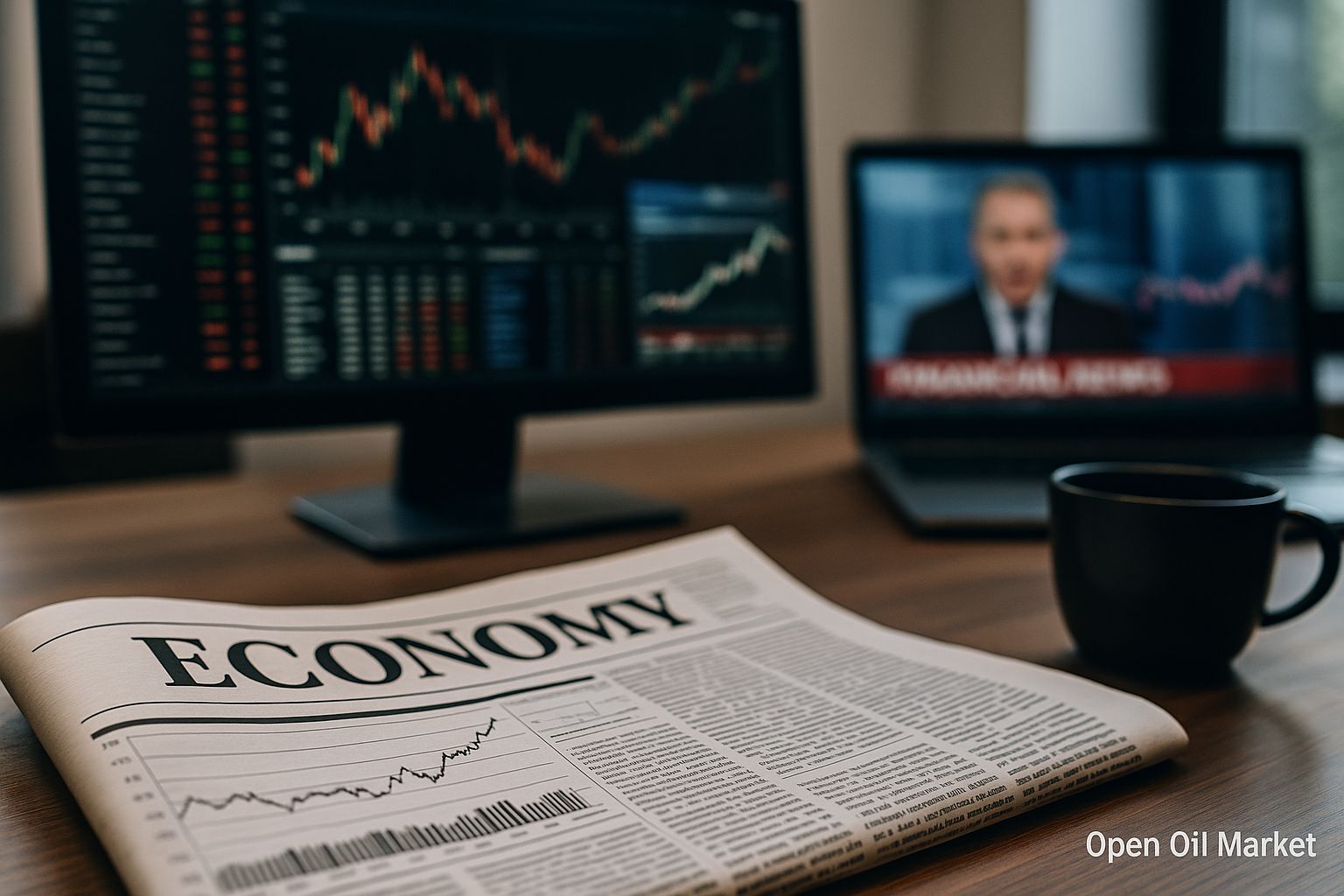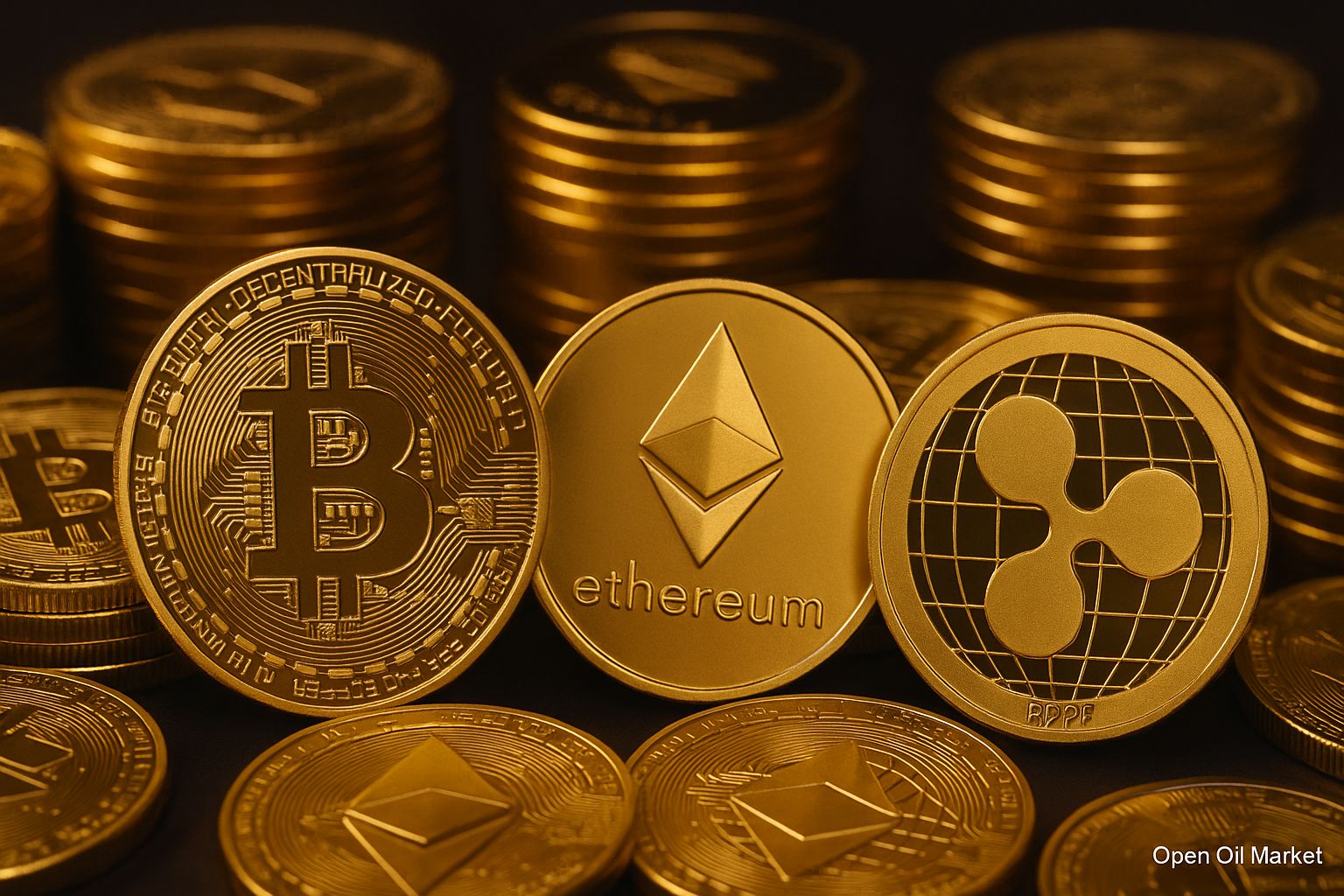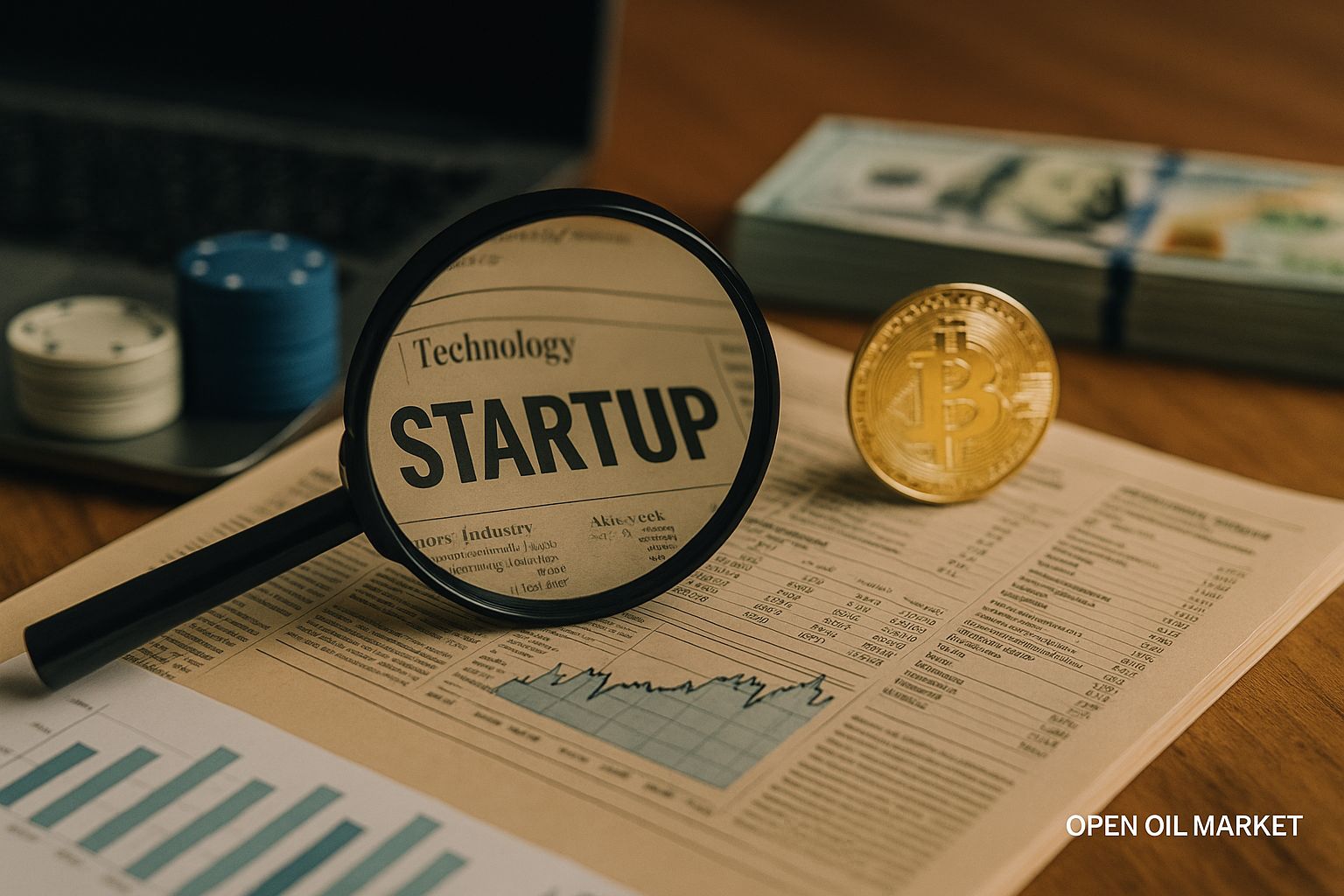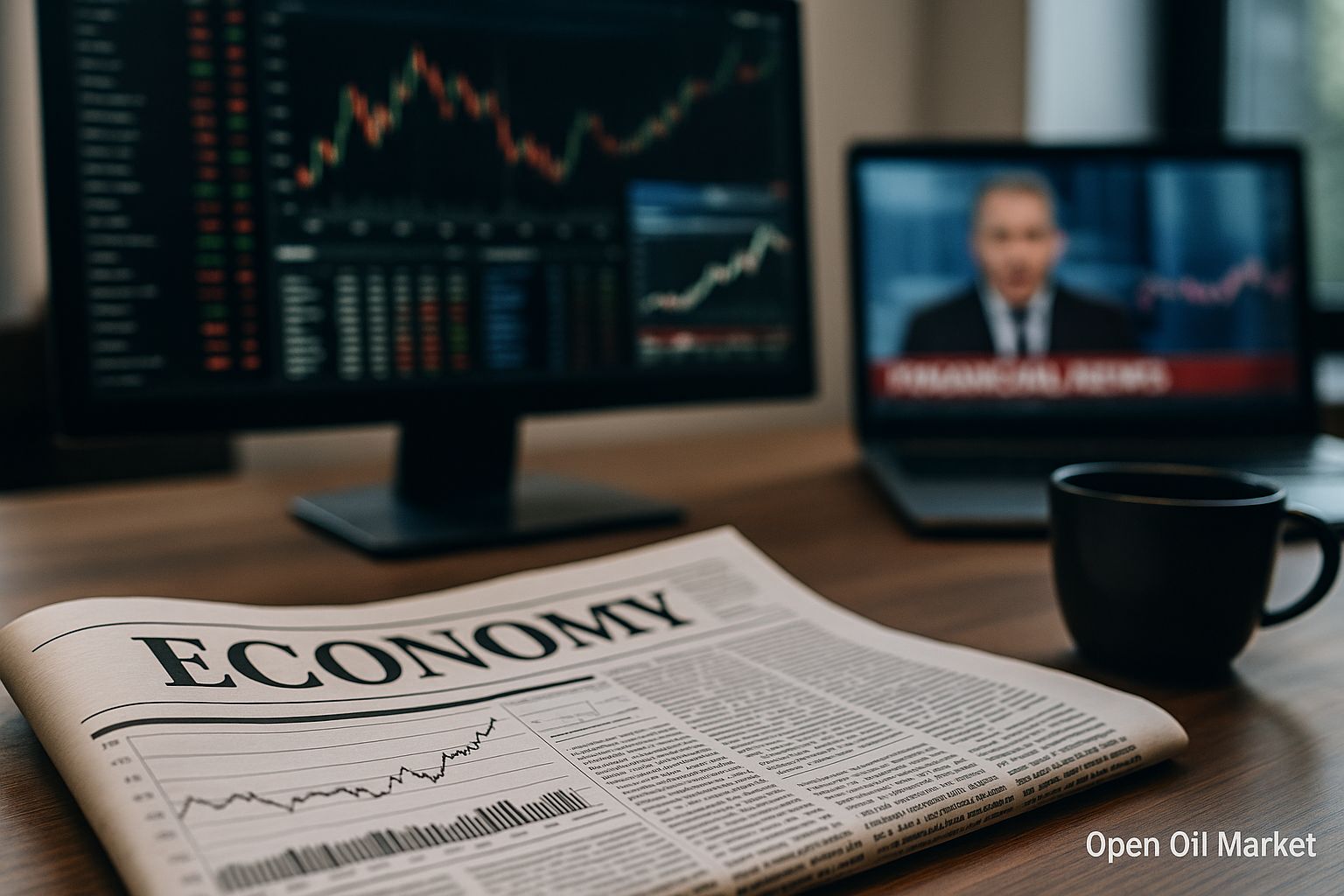
Economic News for Friday, August 29, 2025: Inflation in the U.S. and Germany, Canadian GDP, Trade Balance, and Reports from Major Global Companies. An Analysis of Key Events for Investors.
The last trading day of August 2025 allows investors to summarize the month, focusing on key economic indicators and the concluding wave of corporate earnings reports. In the morning, Germany will release inflation data, while in the afternoon, the crucial price index from the U.S. Federal Reserve will be made available. These releases will largely determine the market sentiment as they transition into autumn. The external backdrop is further complicated by geopolitics: the European Union is concluding a multi-day meeting focusing on a new sanctions package against Russia. Concurrently, several major companies from various sectors (ranging from high-tech to raw materials) are set to present their financial results, providing additional guidance for investors. Overall, Friday aims to clarify final points: confirm or refute the signals from the week and assist market participants in adjusting their strategies before September begins.
EU Discusses 19th Sanctions Package Against Russia
From August 28 to 30, a meeting of EU foreign ministers is taking place, discussing a new, 19th sanctions package against Russia. On the third and final day of this meeting (Friday), a joint statement may be released, or a draft of new restrictive measures may be presented. If European diplomats agree on stringent actions (such as an embargo on Russian diamond exports or additional restrictions on specific sectors of the Russian economy), this will be significant news for the weekend. Tightening sanctions could provoke a negative reaction in the markets during the next trading session—particularly affecting commodities and shares of companies linked to the Russian market. Conversely, the absence of new strict measures will likely be welcomed by the markets, supporting European and emerging market indices.
Germany: Preliminary Inflation Data for August
At 15:00 MSK, Germany will publish preliminary consumer price index (CPI) data for August. In July, annual inflation in the largest economy in Europe held steady at around 2%, reaching its lowest levels in the recent period. The new report will show whether price growth has remained contained into the end of summer. A slowdown in annual inflation (even closer to the European Central Bank's target of 2%) would be a positive signal for the ECB and European markets, confirming the effectiveness of previous rate hikes. However, an unexpected acceleration in price growth (for example, due to rising energy prices) would increase pressure on the ECB to pursue further monetary policy tightening. Such an outcome could negatively impact bond and equity markets in the EU, as investors would price in expectations of new rate increases.
U.S.: Key PCE Inflation Index for July
At 15:30 MSK, the U.S. will release the PCE price index for July—a measure of consumer expenditure inflation closely monitored by the Federal Reserve. This indicator will help assess how close inflation is to the targeted 2%. If the core PCE index continues to slow and approaches closer to the goal (with values around 3% year-on-year or lower), investors will reinforce their belief that the Fed’s rate hike cycle is nearing completion. Such a development would support the U.S. stock market and bond market, as a decrease in inflationary pressure typically reduces the need for further policy tightening. However, if inflation does not decrease or exceeds expectations, the Fed's rhetoric is likely to remain hawkish. This could trigger sell-offs in risk assets due to revived concerns over further interest rate hikes in the U.S.
U.S.: Preliminary Trade Balance Data for July
Also at 15:30 MSK, preliminary data on the U.S. trade balance for July will be released. The dynamics of the trade balance will serve as an additional signal regarding the state of the U.S. economy at the start of the third quarter. A reduction in the trade deficit (for example, due to rising exports or falling imports) could lead to upward revisions in U.S. GDP forecasts, indicating a minor contribution from external demand to economic growth. Conversely, an expansion of the trade deficit—especially if driven by a decline in exports—would signal weakness in external demand and the impact of global factors on the U.S. economy, potentially dampening investor optimism regarding growth rates.
Canada: GDP for Q2 2025
Concurrently with the U.S. data (15:30 MSK), Canada’s quarterly GDP report for the second quarter of 2025 will be released. Analysts expect growth in the Canadian economy to slow during the second quarter amid persistent high interest rates and cooling housing market conditions. Actual figures will illustrate the degree to which rising rates have impacted economic activity in Canada. If GDP growth is noticeably below forecasts or even shifts into contraction, discussions about a potential recession in Canada will intensify. This could weaken the Canadian dollar’s position and raise expectations for policy easing by the Bank of Canada. Conversely, an unexpected surge in economic growth (above forecasts) would demonstrate the resilience of Canadian businesses to tightening financial conditions and support the national currency.
U.S.: Chicago PMI Index for August
At 16:45 MSK, the August Chicago PMI business activity index, which reflects the state of the manufacturing and services sectors in the industrial region of the U.S. (Chicago and the Midwest), will be published. This indicator is often seen as an early precursor to the national ISM index. Forecasts suggest that the PMI will remain in the contraction zone—around 45-50 points. If the index surpasses the 50-point threshold, it would be the first signal of a return to growth for the regional economy. Such a result would be positively received by the market, bolstering hopes for recovery in the industrial sector. However, if the index falls significantly below 50 again, it would confirm the ongoing recession in the manufacturing sector, indicating that elevated interest rates continue to dampen economic activity and pressure on the manufacturing sector remains.
U.S.: University of Michigan Consumer Confidence Index and Inflation Expectations
At 17:00 MSK, the final data from the August consumer sentiment survey conducted by the University of Michigan will be revealed. This includes the consumer confidence index and a related inflation expectations segment assessing households' expectations regarding price growth for the coming year and over a longer period (5 years). The preliminary estimate for the confidence index in August was 71.2 points—the final version will indicate whether American sentiment changed by the end of the month. If the final index value exceeds the preliminary one, it will signify a more confident household sentiment and bolster trust in the resilience of consumer demand heading into the fall. On the other hand, a decline in the confidence index relative to the previously announced level would indicate that new concerns have emerged among the population—such as rising prices, news from the labor market, or other factors affecting well-being.
The inflation expectations component in the same report, assessing consumers' anticipated price growth over the next year and beyond, merits special attention. If the August survey shows that American households have lowered their projected inflation level for the coming year, this would be positive news for the Fed. Such a signal confirms the appropriateness of the chosen monetary policy direction and provides markets with reason for optimism (as the risks of further rate increases diminish). However, a rise in consumer inflation expectations would be a concerning signal: it indicates that the fight against inflation is still far from over. As a result of heightened inflationary concerns, market sentiment could deteriorate somewhat, as investors begin to incorporate tighter monetary policy conditions into their asset valuations.
Cryptocurrencies: Eric Trump to Speak at Bitcoin Asia 2025 Conference
Among the non-banking events, significant attention is drawn to the large cryptocurrency conference Bitcoin Asia 2025, taking place from August 28 to 29 in Hong Kong. One of its invitees is Eric Trump—the son of former U.S. President Donald Trump and executive vice president of the Trump Organization. Reports suggest that Eric Trump will participate in the event as a moderator for various sessions focusing on the future of Bitcoin and the global cryptocurrency industry. His presence has attracted considerable interest from media and the public, highlighting the convergence of global political business and the digital asset market. In Hong Kong, Trump's participation sparked discussions, with some local officials choosing to distance themselves from the conference, receiving informal recommendations to avoid joint appearances. Nonetheless, for the crypto community, the mere fact that a representative of a well-known business dynasty is participating signals the growing influence of digital currencies. The conference is a platform for discussing mass adoption of Bitcoin, regulation, and innovation, and the presence of a figure like Eric Trump only amplifies investor attention towards the development of the industry in the Asia-Pacific region.
Corporate Earnings Reports: Alibaba and Russian Blue Chips
On Friday, the concluding phase of the global corporate earnings season continues, with investors looking towards the results of several major public companies. Both foreign tech giants and leading firms from emerging markets, including Russia, are set to release their earnings reports. Below are key companies whose publications may influence market sentiment:
- Alibaba Group (China, technology): Before the U.S. market opens, Chinese tech giant Alibaba will present its quarterly report covering April to June. Alibaba's results will serve as an indicator of consumer activity in China. Strong revenue growth in core segments (e-commerce, cloud services) will suggest a revival of domestic demand in the Chinese economy, potentially supporting the entire Asian market. Investors will also focus on Alibaba's management comments regarding the regulatory environment for the IT sector in China and competition from other platforms. Any improvements in key metrics or optimistic forecasts from Alibaba could strengthen global investors' interest in Chinese stocks. Conversely, weak results could heighten concerns about the slowdown of the Chinese economy and may temporarily dampen risk appetite for emerging markets.
- Gazprom, Rosneft, LUKOIL (Russia, energy): On the last day of the week, financial results for the first half of the year will be released by several systemic companies in the Russian energy sector, including gas monopoly Gazprom and oil companies Rosneft and LUKOIL (results are also expected from their colleagues, such as Transneft and Bashneft). The half-year figures from these corporations shed light on the state of a key sector for Russia—the oil and gas industry. Gazprom's and the oil companies’ results will reflect the impact of energy prices on the global market as well as the redirection of export flows to the East due to sanctions. Strong profits and stable margin indicators for Gazprom, Rosneft, and LUKOIL will signal that the sector is adapting to new conditions, potentially strengthening investor interest in Russian oil and gas stocks. However, if the reports show a significant decline in profits (for example, due to tax burdens or reduced export revenues), such negative surprises could weigh on Russian stock indices and may weaken the ruble due to concerns over the country's export income.
- Aeroflot (Russia, transport): National carrier Aeroflot will report its results for the first half of 2025. Its results will provide insights into the state of the aviation industry and domestic tourism. Investors are looking for signs of passenger flow recovery: growth in transportation volumes and improved financial indicators will indicate confident demand recovery for air travel following the pandemic slump. Such signals may heighten interest in Aeroflot shares and the transport sector overall. However, if the report shows weak dynamics or losses (for example, due to increased costs or insufficient demand), it will cool the market—the weak passenger flow will serve as a reminder of the ongoing difficulties in the industry, hindering investment inflows into carriers.
- NLMK (Russia, metallurgy): The largest metallurgical plant, NLMK, will publish its results for the first half of the year, reflecting the affairs in the steel production sector. NLMK’s figures will demonstrate how the global steel market situation and demand from the construction and industrial sectors are affecting the company. If NLMK's half-year profit and revenue remain stable or rise, it will signify steady demand for metal products despite external constraints. A strong report from the metallurgist could instill optimism among investors regarding the Russian raw materials sector. Conversely, a decline in financial results (for instance, due to rising raw material costs or reduced steel export supplies) will lead analysts to conclude that the sector is facing challenges. Weak data from NLMK could temporarily heighten caution in the market regarding metallurgical companies, although expectations regarding dividends and long-term prospects for the sector remain crucial factors for investors.




